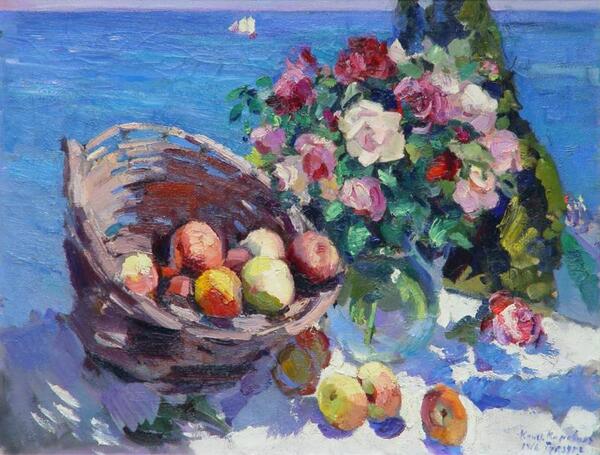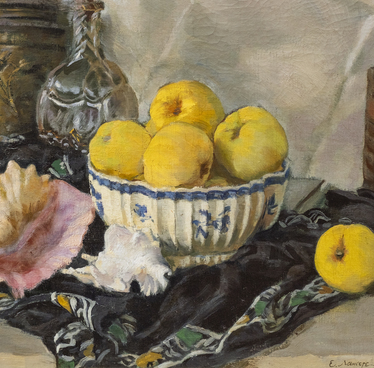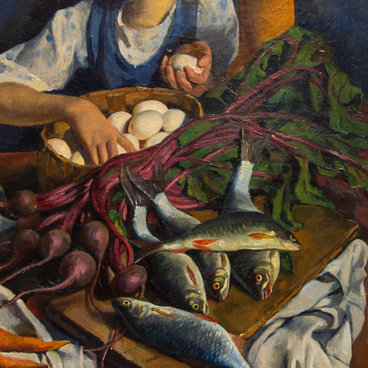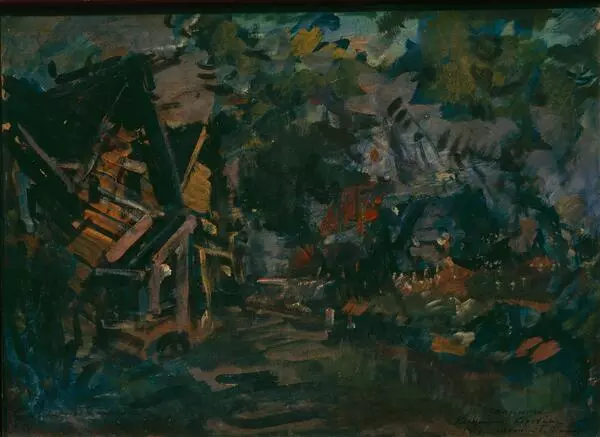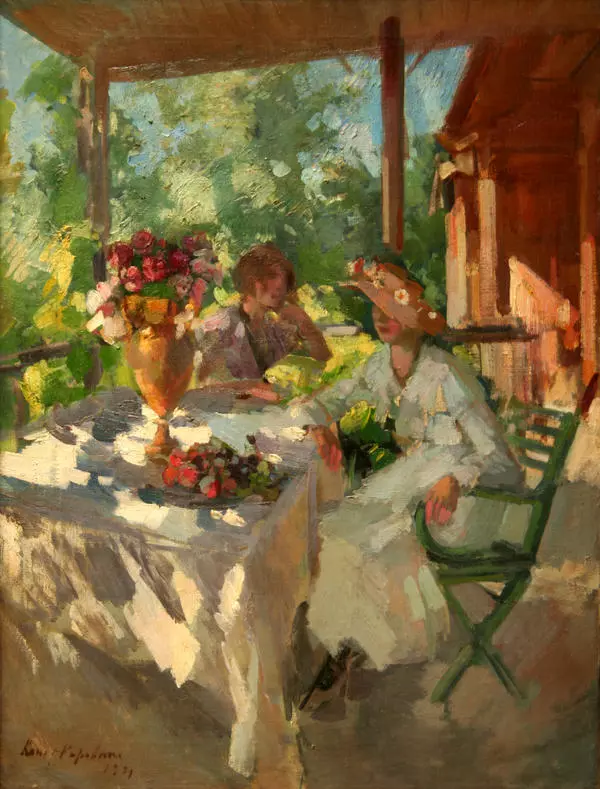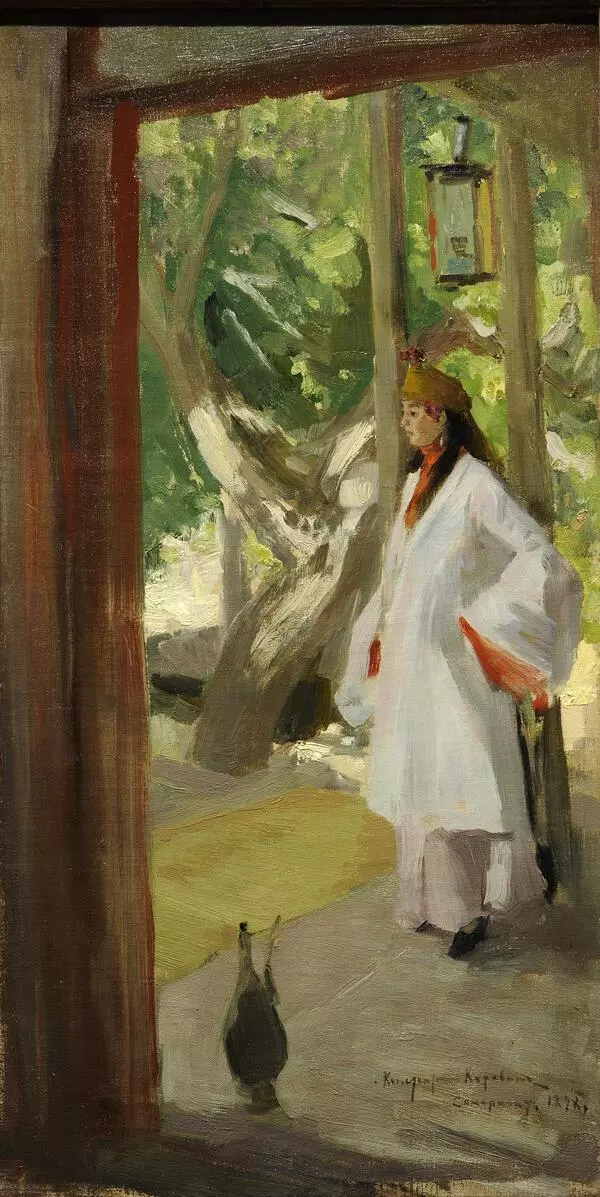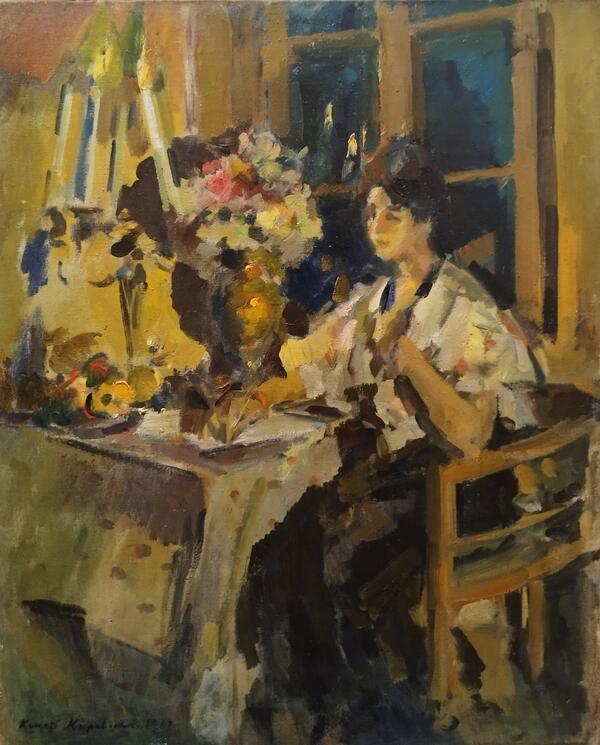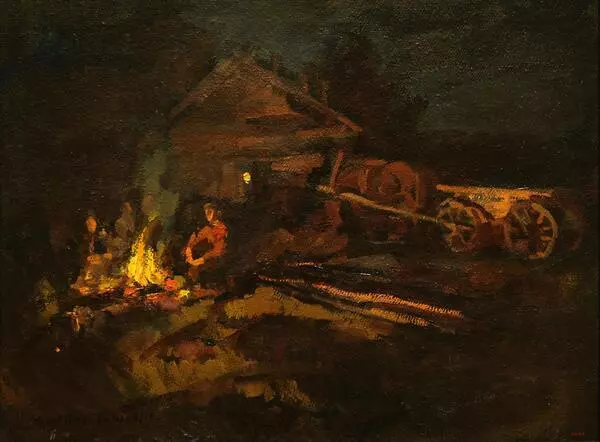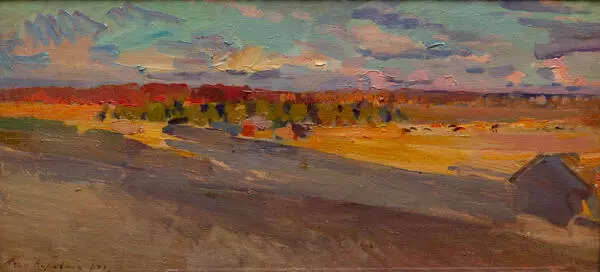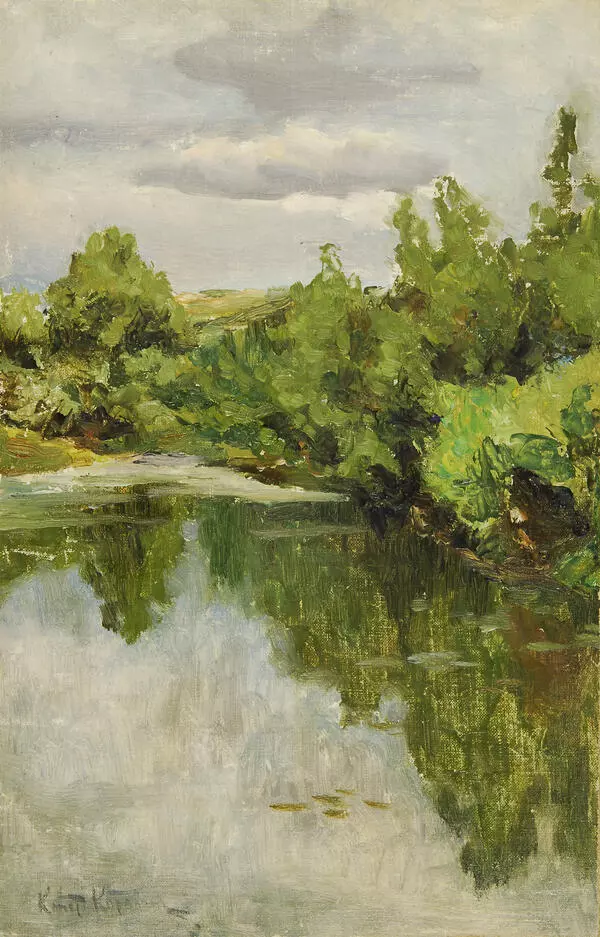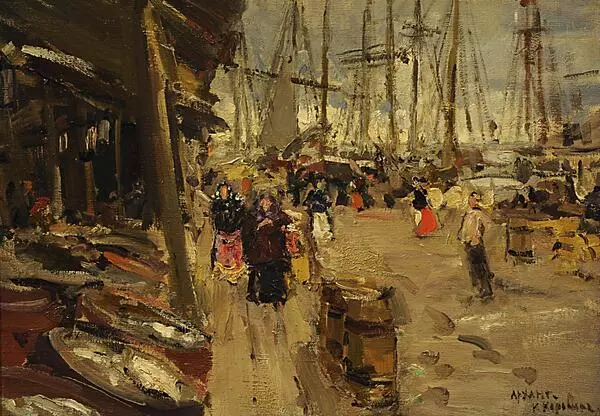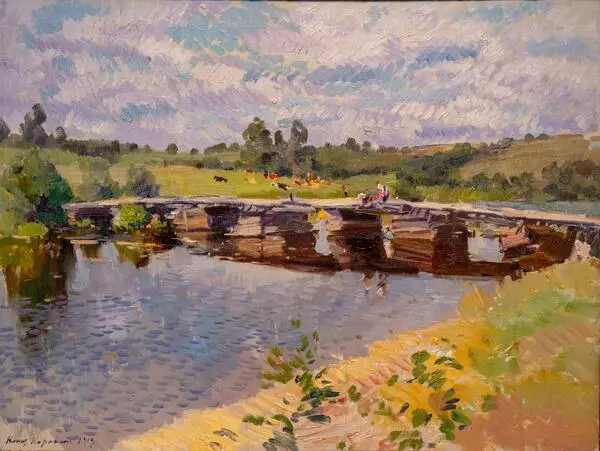Konstantin Alexeevich Korovin painted “Still Life. Gurzuf. Roses by the Sea” during one of the most difficult periods of his life.
In 1914, after his son was injured in an accident, Konstantin Korovin fell seriously ill and together with his family went to recuperate in Crimea. His favorite place on the southern coast of Crimea was Gurzuf where he spent two years — 1915 and 1916 — often traveling back to Moscow to run some errands. In her memoirs, Irina Chaliapina, daughter of the great Russian singer, wrote that Korovin”…had a charming dacha on the Black Sea coast, not far from the pier in Gurzuf…”The house featured 14 rooms and was completely designed and furnished by the artist. On its terrace, Konstantin Korovin painted many a still life with roses,”…some wet from the morning dew, some flaming in the sun…”
Konstantin Korovin was born into a family of a wealthy Old Believer merchant in Moscow in 1861. Both his parents were talented artists and inspired the love for art in their two sons Konstantin and Sergei who went on to make it their profession. The artistic development of the brothers was greatly influenced by Illarion Mikhailovich Pryanishnikov, their relative on their mother’s side. At the age of 14, Konstantin followed in the footsteps of his elder brother and entered the Moscow School of Painting, Sculpture and Architecture where he studied at the Architecture Department. After two years, he transferred to the Painting Department, to the class of the famous landscape painter Alexey Savrasov. Having graduated in 1886, Korovin was not awarded the title of a class artist. Still, in 1901, along with Valentin Serov, he was invited to teach at his alma mater. Korovin and Serov not only became friends but shared a studio for many years. In 1887, 1892, and 1893, Korovin traveled to Paris where he became acquainted with and fascinated by Impressionism. He was among the first artists to introduce this movement in Russia. Korovin admired the representatives of this style and told his students that “there have not been and there are no artists better than the Impressionists”.
Korovin is also known as a brilliant scenic designer who in the 1900s–1910s created scenery for performances in the Bolshoi and Mariinsky Theaters, and La Scala in Milan. After the Russian Revolution of 1917, he worked on preserving art monuments. However, in 1922, following the advice of Anatoly Lunacharsky, the artist left Russia for France where he continued his creative work. Konstantin Korovin died in 1939.